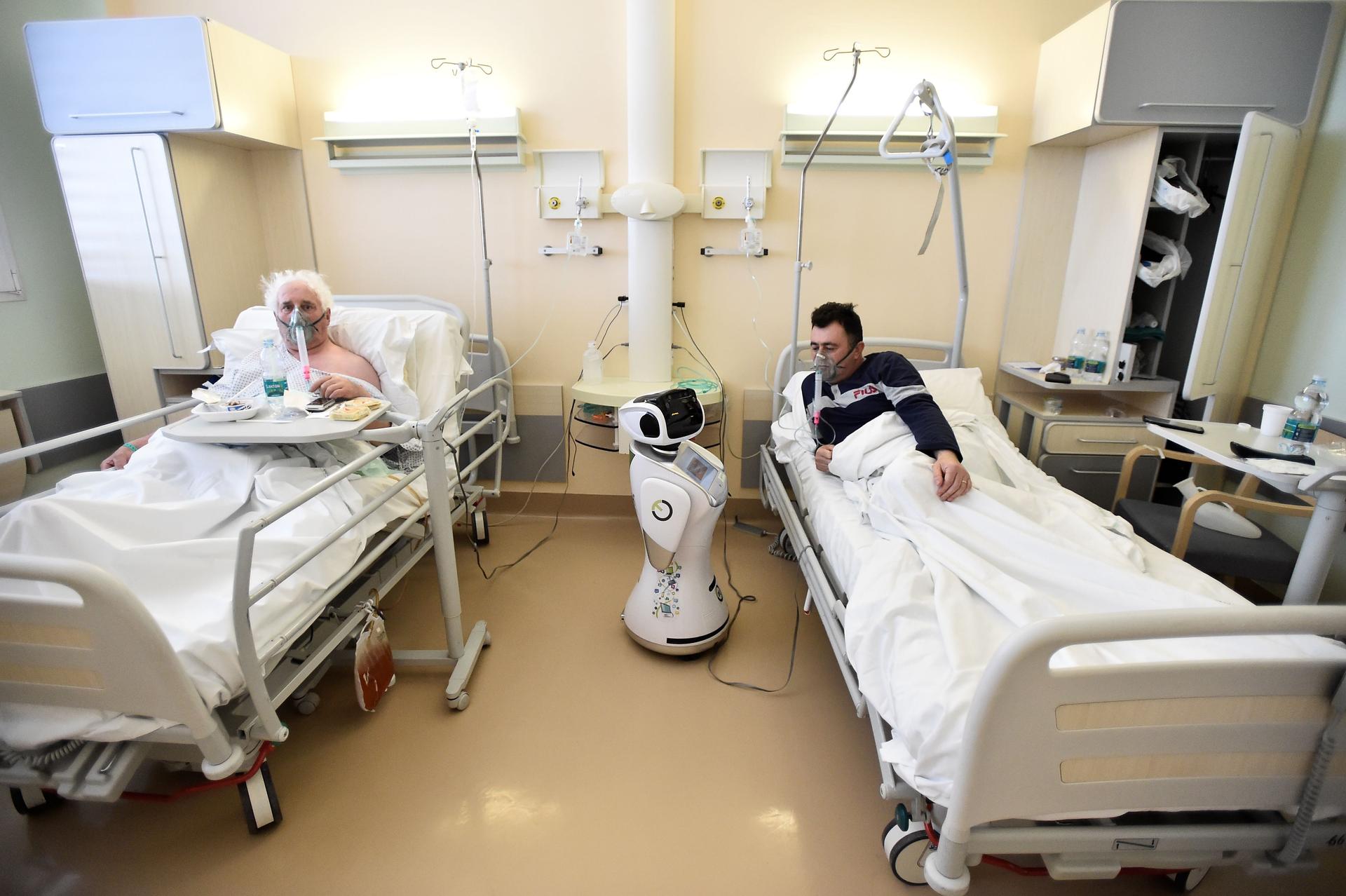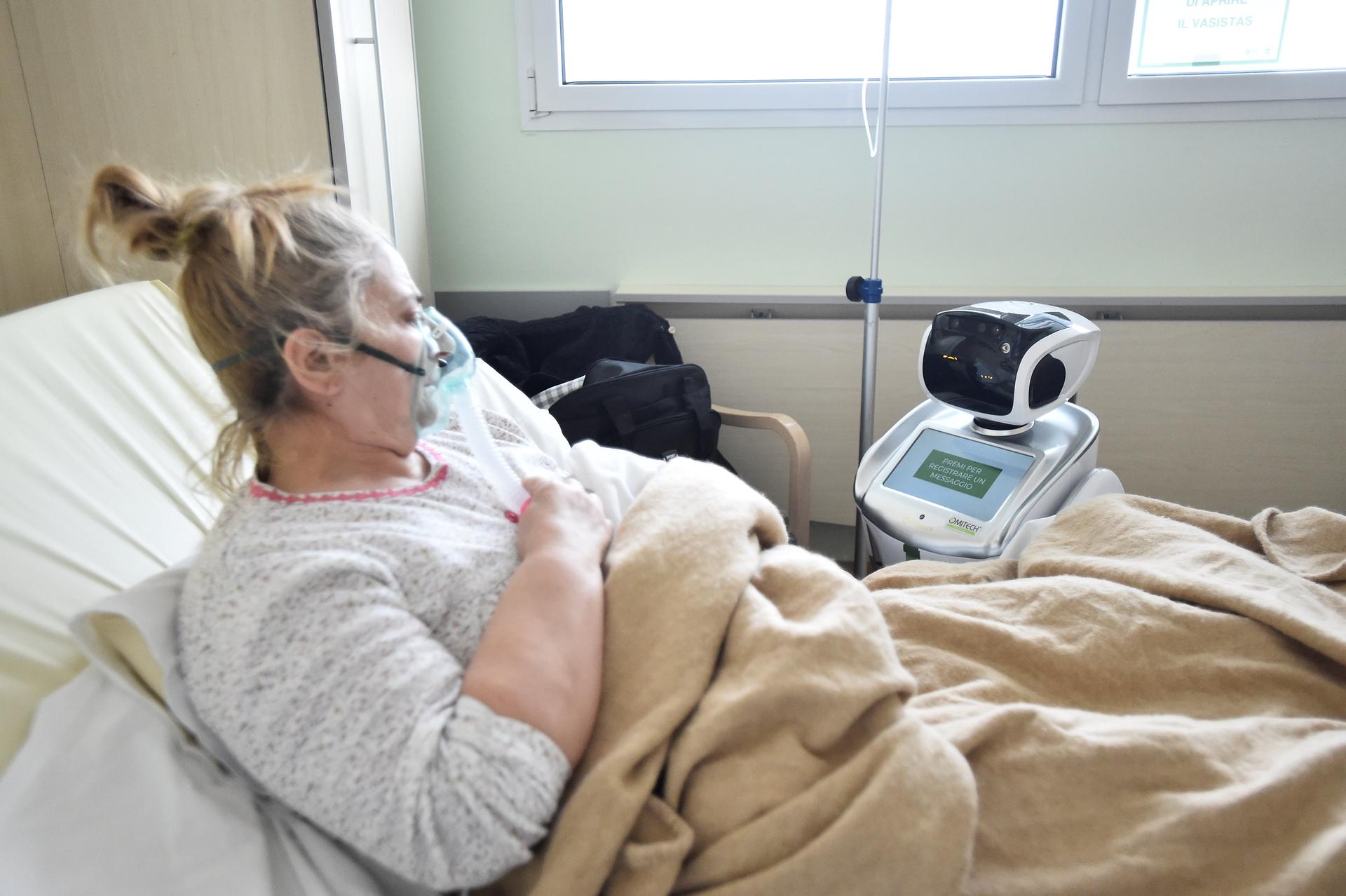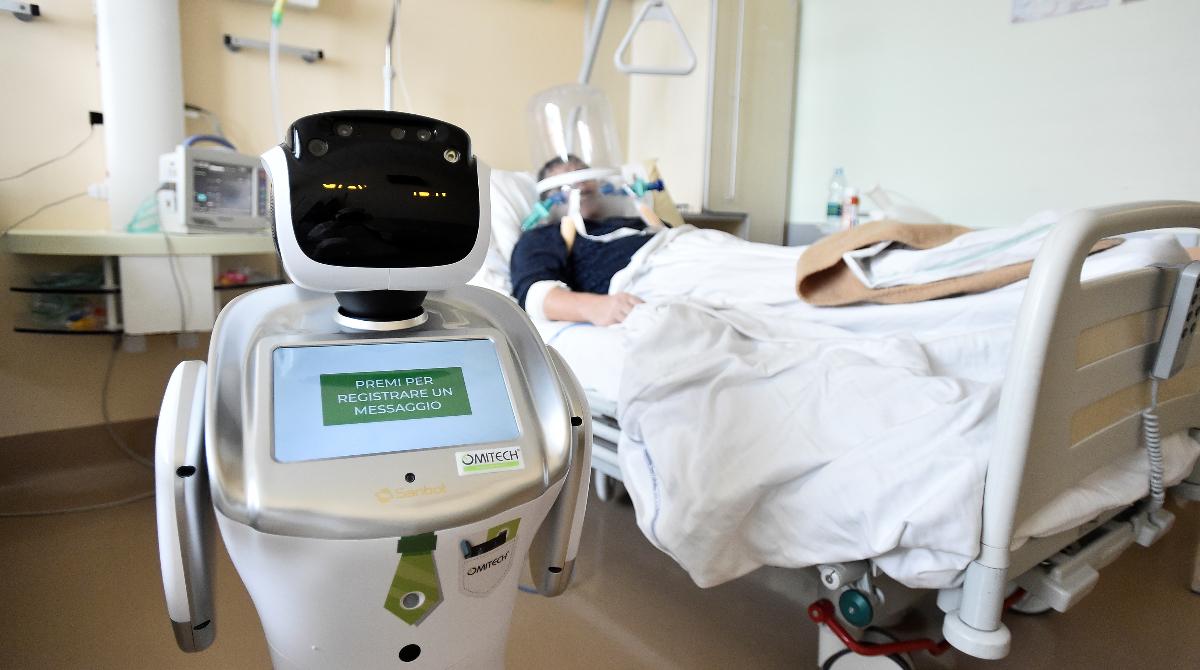Tommy the robot nurse helps Italian doctors care for COVID-19 patients
A robot helping medical teams treat patients suffering from COVID-19 is pictured at a patient’s room, in the Circolo hospital, in Varese, Italy on April 1, 2020.
Meet Tommy, a robot nurse.
Tommy is one of six new robots helping flesh-and-blood doctors and nurses care for coronavirus patients at the Circolo Hospital in Varese, a city in the northern Lombardy region that is the epicenter of the outbreak in Italy.
The child-size robots with large blinking eyes are wheeled into rooms and left by a patient’s bedside so doctors can look after others who are in more serious conditions.
“So basically … it has a monitor, a tablet. And the tablet, of course, has a microphone, a way to communicate both visually and through the audio between the patients and nurses and doctors remotely,” Dr. Gianni Bonelli, director of the Circolo Hospital, told The World via a translator.

Robots like Tommy can measure blood pressure and the oxygen saturation for the patients in the ICU — including those who are hooked up to a ventilator. These two parameters provide a crucial picture of the patients’ health conditions.
“It’s not a way to substitute the human factor, which is constantly something that [patients] rely on and we know how important it is for them,” Dr. Bonelli said.
Most importantly, Tommy and his high-tech teammates allow the hospital to limit the number of direct contact doctors and nurses have with patients, thus reducing the risk of infection. The robots also help the hospital limit the number of protective masks and gowns staff have to use.
It takes a while for patients to realize that, given the enormity of the task of combating coronavirus and the toll it is taking on overworked medical staff, robots may be just what the doctor ordered.
“You have to explain to the patient the aim and function of the robot,” said Doctor Francesco Dentali, director of intensive care at the hospital.
“The first reaction is not positive, especially for old patients. But if you explain your aim, the patient is happy because he or she can speak with the doctor,” Dentali said.

More than 4,000 Italian health workers have contracted the virus treating victims in Italy, and 66 doctors have died. The shortage of masks and other protective equipment has been one of the biggest problems dogging the national health system since the contagion surfaced at the end of February.
Tommy is the name of the son of the primary doctor of the ICU at the Circolo Hospital. Health professionals are avoiding going home after their shifts to prevent the risk of spreading the virus to their families.
“So this primary doctor said, ‘Well, at least they have someone next to me that I can call with my son’s name and feel like I’m at home,’” Bonelli explained.
Tommy and his fellow robot nurses have one more advantage: they are not subject to exhaustion. After a quick charge of batteries, they are back at work in the ward.
Reuters contributed to this report.
